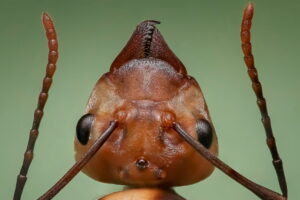Posted December 13, 2017 by Sarah Malone
Category: Ants
Ants are resilient and skilled at using a variety of environments to survive and multiple which is what makes them so hard to control.
With Proper identification we are able to properly treat ant colonies and win the battle against these pests. After pinpointing the type of ant specie is plaguing your property it is easier to put a pest management program into place to combat the problem.
The more common ant species can be categorised into sugar or protein feeders. By determining what food they prefer you can then apply the correct treatment method. It is also important to keep an eye on weather predictions as the weather can effect feeding behaviours, hibernation or mating times.
Ants are divided into two groups, which is distinguished by the segment called a pedicel found between the ants thorax and abdomen. This is made up of either one or two segments referred to as one node or two nodes.

One Node Species Include: Ghost Ants, Crazy Ants, Carpenter Ants, White-Footed Ants and Odorous Ants.
Two Node Species Include: Fire Ants, Pharaoh Ants, Pavement Ants and Little Black Ants.
When treating ants there are four things you need to consider to achieve the best program to ensure easy successful control.
Full Inspection of surrounding areas:
A Licenced pest controller will search your property for signs of ant trails, scouts, entrance points and nests inside and out of the building. Some of the main areas these signs are found is around excess foliage, adjoining structures such as patios and pergolas, around any gaps or cracks around the exterior of the building, around gardens, entrances and damp or shady areas.
Indoor Treatments:
Trails and areas around where ants have been found indoor can be spot treated directly along their path. A Pest Controller will also treat any cracks and crevices in the areas in which ants have been seen previously. If you are looking to deter ants before the scout comes searching a barrier treatment can be applied around entrances such as doors, window frames, weep holes and under the house to make your home less inviting.
Exterior Treatments:
A common management carried out around homes is an exterior perimeter treatment. This creates an overall barrier around the building to help deter ants from approaching your home. It is important to keep in mind that this treatment will weaken with excess cleaning and rain though out the year.
Baiting or Spot Treatments:
Pest Controllers will offer another food source to areas in which ant trails have been located as an ideal way to treat the ant infestations. The Ants will ingest the liquid component of the gel or carry the food back to the nest feeding the rest of the colony and spreading the treatment to the heart of the colony.
Another option is again to apply a barrier around the areas in which you are finding a high ant population such as around patios, gardens, outdoor furniture which are close to the home.
Overall it is important to keep an eye on what you put down around the home and yard. Some fertilisers, dog droppings, flowers or plants that naturally produce sticky sap can create a substance in which ants like to eat. Reduce food being left out overnight and easy water sources for the ants to find.
If you would like more information on ant control and things you can do around you home to help control the ant population, please contact our office 6884 7557.






